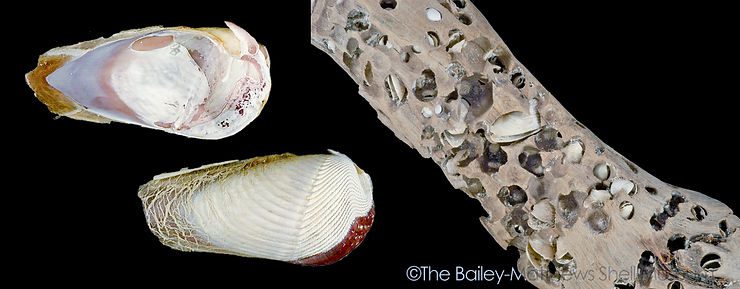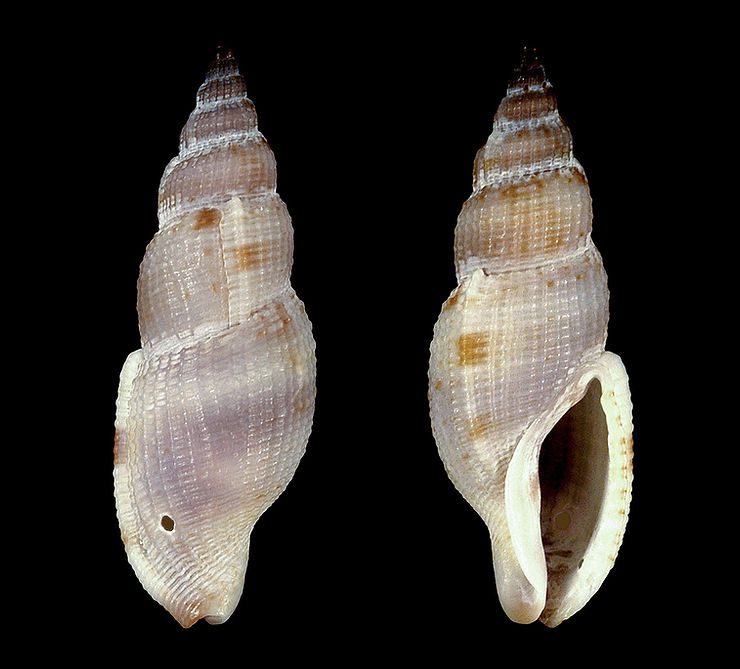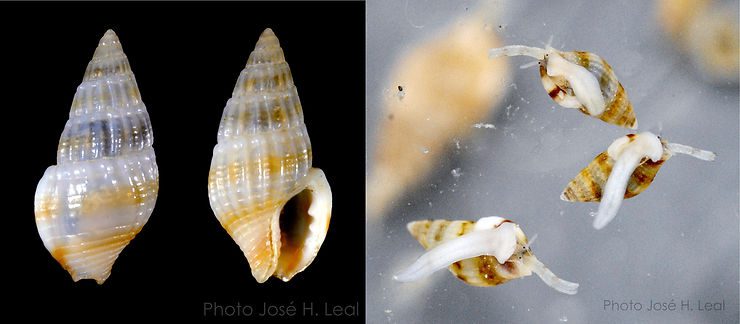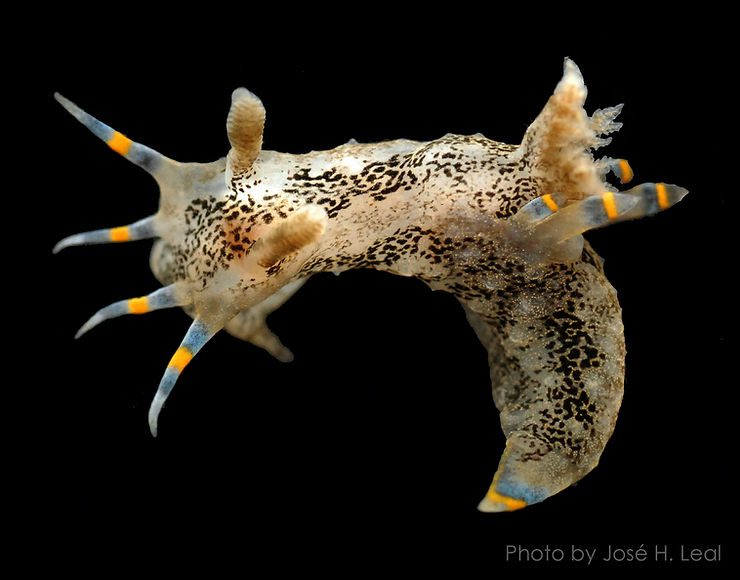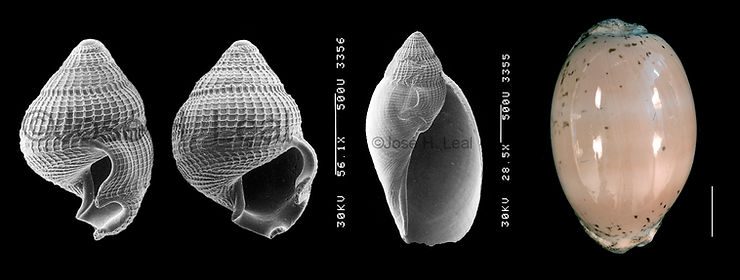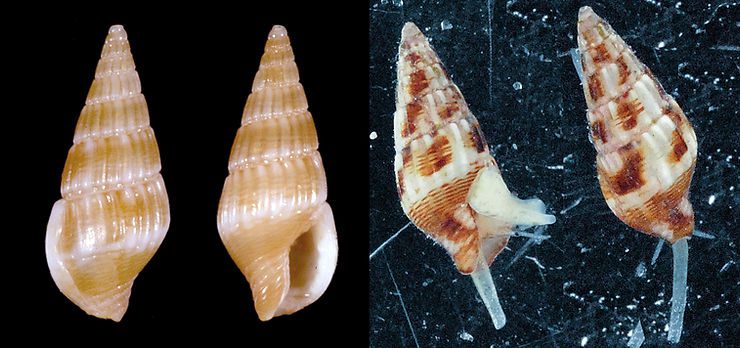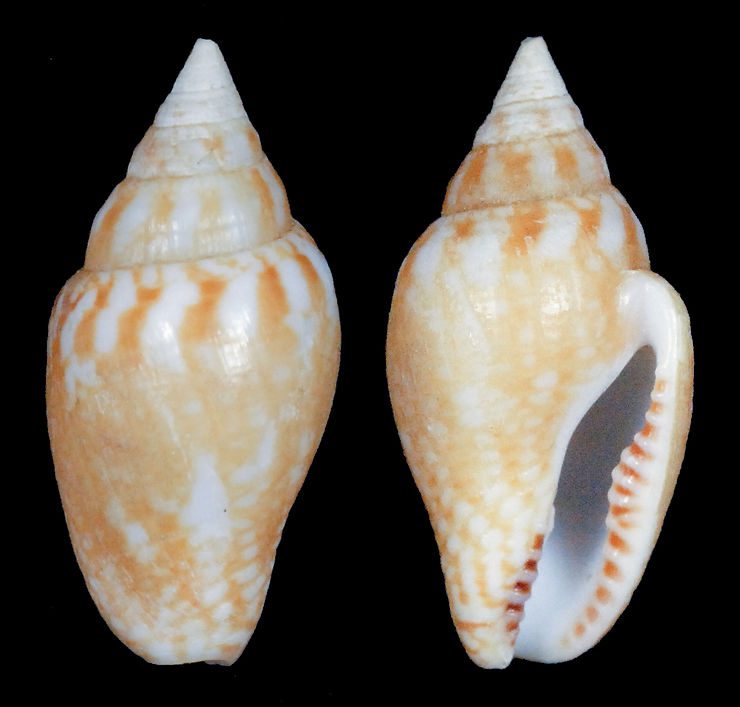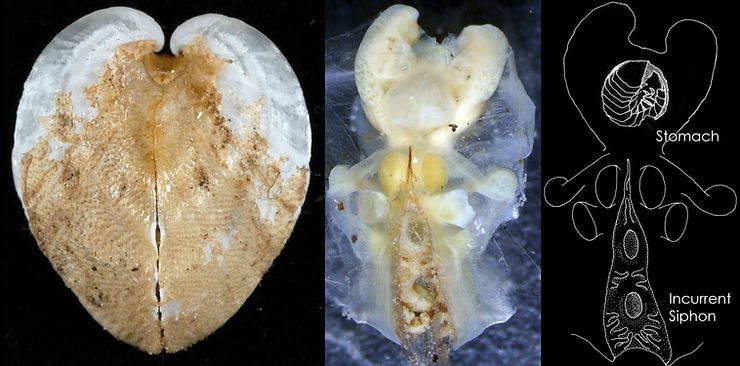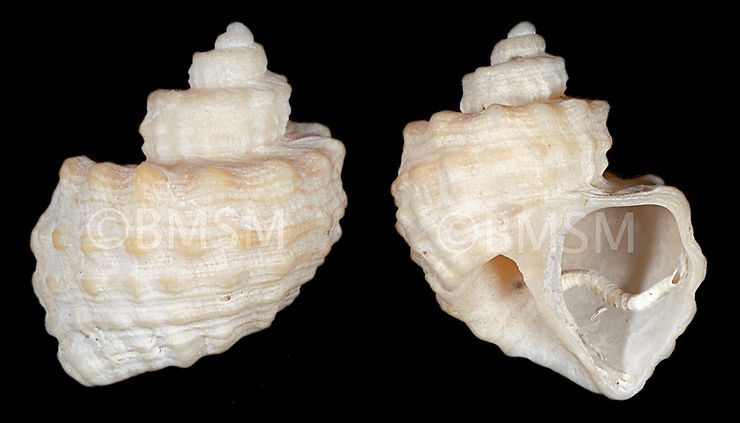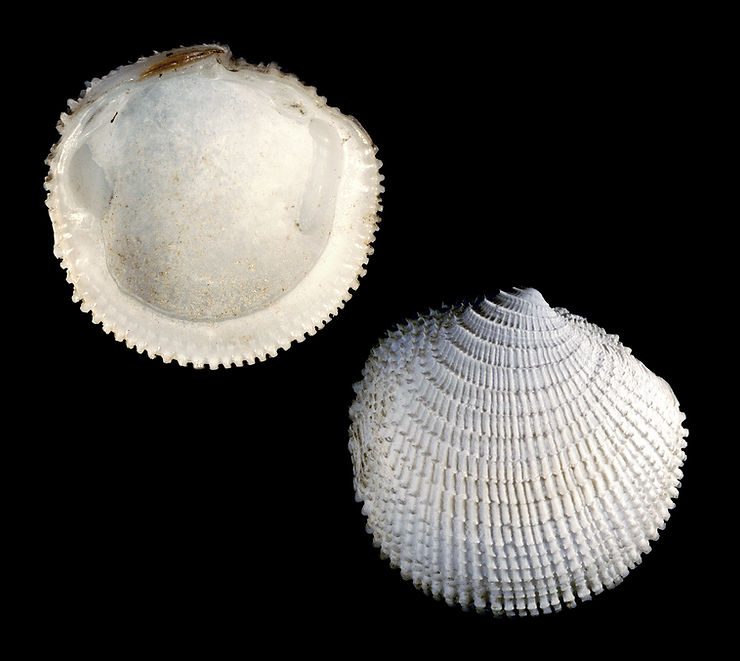
The Woven Lucine
The Woven Lucine, Lucinisca nassula (Conrad, 1846), is one of many species of the family Lucinidae found along the barrier islands of SW Florida (there are at least nine species found on local beaches—the Buttercup Lucine is probably the best known species). Lucinid clams are known to host chemosynthetic bacteria in their body tissues. These bacteria derive their life energy from simple chemical reactions (in contrast to plants, which derive their energy from sunlight, in the process known as ph
